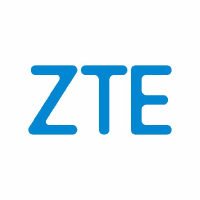Анализ компании Plover Bay Technologies Limited
1. Резюме
Плюсы
- Дивиденды (7.04%) больше среднего по сектору (1.92%).
- Доходность акции за последний год (118.92%) выше чем средняя по сектору (48%).
- Текущая эффективность компании (ROE=60.1%) выше чем в среднем по сектору (ROE=3.32%)
Минусы
- Цена (5.67 HK$) выше справедливой оценки (0.3564 HK$)
- Текущий уровень задолженности 8.8% увеличился за 5 лет c 4.19%.
Похожие компании
2. Цена акции и эффективность
2.1. Цена акции
2.2. Новости
2.3. Рыночная эффективность
| Plover Bay Technologies Limited | Technology | Индекс | |
|---|---|---|---|
| 7 дней | 6% | -5% | 3.7% |
| 90 дней | 19.6% | 25.5% | 18% |
| 1 год | 118.9% | 48% | 45.4% |
1523 vs Сектор: Plover Bay Technologies Limited превзошел сектор "Technology" на 70.92% за последний год.
1523 vs Рынок: Plover Bay Technologies Limited превзошел рынок на 73.49% за последний год.
Стабильная цена: 1523 не является значительно более волатильным чем остальная часть рынка на "Hong Kong Exchanges" за последние 3 месяца, типичные отклонения в пределах +/- 5% в неделю.
Длительный промежуток: 1523 с недельной волатильностью в 2.29% за прошедший год.
3. Резюме по отчету
4. Фундаменальный анализ
4.1. Цена акции и прогноз цены
Выше справедливой цены: Текущая цена (5.67 HK$) выше справедливой (0.3564 HK$).
Цена выше справедливой: Текущая цена (5.67 HK$) выше справедливой на 93.7%.
4.2. P/E
P/E vs Сектор: Показатель P/E компании (9.68) ниже чем у сектора в целом (71.18).
P/E vs Рынок: Показатель P/E компании (9.68) ниже чем у рынка в целом (26.64).
4.2.1 P/E Похожие компании
4.3. P/BV
P/BV vs Сектор: Показатель P/BV компании (5.41) выше чем у сектора в целом (1.64).
P/BV vs Рынок: Показатель P/BV компании (5.41) выше чем у рынка в целом (-11.94).
4.3.1 P/BV Похожие компании
4.4. P/S
P/S vs Сектор: Показатель P/S компании (2.88) выше чем у сектора в целом (1.92).
P/S vs Рынок: Показатель P/S компании (2.88) выше чем у рынка в целом (2.71).
4.4.1 P/S Похожие компании
4.5. EV/Ebitda
EV/Ebitda vs Сектор: Показатель EV/Ebitda компании (79.82) выше чем у сектора в целом (-17.63).
EV/Ebitda vs Рынок: Показатель EV/Ebitda компании (79.82) выше чем у рынка в целом (9.94).
5. Доходность
5.1. Доходность и выручка
5.2. Доход на акцию - EPS
5.3. Прошлая доходность Net Income
Тренд доходности: Восходящий и за последние 5 лет вырос на 19.49%.
Замедление доходности: Доходность за последний год (0%) ниже средней доходности за 5 лет (19.49%).
Доходность vs Сектор: Доходность за последний год (0%) ниже доходности по сектору (122.47%).
5.4. ROE
ROE vs Сектор: Показатель ROE компании (60.1%) выже чем у сектора в целом (3.32%).
ROE vs Рынок: Показатель ROE компании (60.1%) выже чем у рынка в целом (6.07%).
5.5. ROA
ROA vs Сектор: Показатель ROA компании (33.34%) выже чем у сектора в целом (1.61%).
ROA vs Рынок: Показатель ROA компании (33.34%) выже чем у рынка в целом (3.24%).
5.6. ROIC
ROIC vs Сектор: Показатель ROIC компании (0%) ниже чем у сектора в целом (0%).
ROIC vs Рынок: Показатель ROIC компании (0%) ниже чем у рынка в целом (0%).
7. Дивиденды
7.1. Дивидендная доходность vs Рынок
Высокая див доходность: Дивидендная доходность компании 7.04% выше средней по сектору '1.92%.
7.2. Стабильность и увеличение выплат
Стабильность дивидендов: Дивидендная доходность компании 7.04% стабильно платится на протяжении последних 7 лет, DSI=0.86.
Слабый рост дивидендов: Дивидендный доход компании 7.04% слабо или не растет за последние 5 лет. Рост на протяжении только 1 год.
7.3. Процент выплат
Покрытие дивидендами: Текущие выплаты из доходов (78.47%) находятся на комфортном уровне.
Оплатите подписку
Больше функциональности и данных для анализа компаний и портфеля доступно по подписке


